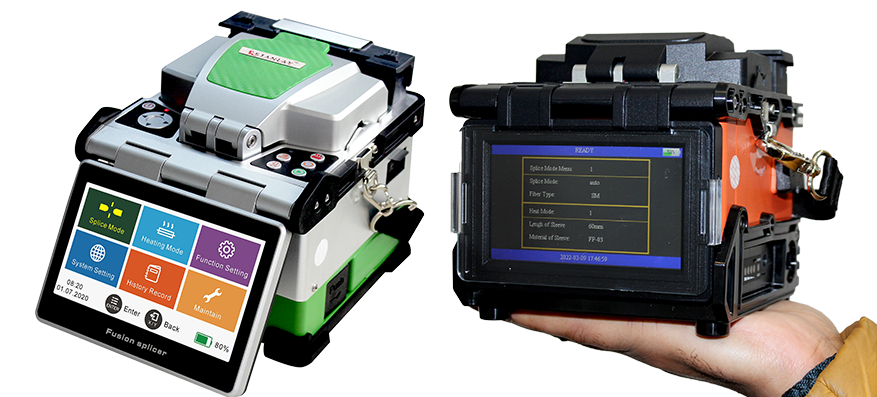Your questions answered about fibre testing equipment in fiber optic maintenance
Wiki Article
All You Required to Find Out About Robotic Vision and Its Applications in Advanced Optical Measurement Systems
Robotic vision stands for a considerable innovation in the junction of computer system vision, artificial intelligence, and artificial intelligence. This technology boosts the precision of optical measurement systems, making it possible for real-time information analysis and improved high quality control. Its effect extends multiple markets, from making to health care. Nonetheless, the advancing landscape of robot vision questions about future abilities and applications (robotic vision). What developments exist in advance in this transformative field?Comprehending Robotic Vision: Secret Concepts and Technologies
Robotic vision incorporates the modern technologies and methodologies that allow machines to interpret and comprehend aesthetic info from their environment. This area combines elements of computer vision, expert system, and equipment learning to facilitate computerized decision-making based on aesthetic information. Key concepts include photo processing, which entails the improvement and analysis of photos to draw out significant functions, and object recognition, which enables devices to determine and identify things within a scene.
The Assimilation of Robotic Vision With Optical Measurement Solutions
As sectors significantly demand precision and effectiveness, the combination of robot vision with optical dimension systems has become a transformative technique. This synergy allows robots to view and interpret their environments, improving the capability of optical measurement systems to evaluate and evaluate things with exceptional precision. By equipping optical sensors with innovative imaging innovations, robotic vision allows real-time data collection and handling, facilitating immediate adjustments to dimension specifications.Additionally, the combination equips automated systems to detect variations in measurements, surface high quality, and positioning, which are vital in top quality control processes. Improved formulas, such as machine discovering, additional enhance this combination by boosting the systems' capacity to adapt to different environments and scenarios. The assimilation not only simplifies dimension procedures but also decreases errors, making certain that items meet rigorous sector standards, thus solidifying the function of robotic vision in the future of optical dimension systems.
Applications of Robotic Vision in Production
In modern-day production atmospheres, the use of vision systems has actually reinvented production processes by enabling devices to carry out jobs with amazing precision and speed. Robotic vision systems are progressively utilized for quality assurance, where they evaluate products for issues and assurance adherence to specs. These systems utilize cams and advanced algorithms to assess products in real-time, considerably decreasing the risk of human error.In addition, robot vision facilitates automation in production line, allowing robotics to accurately determine components and construct them with marginal downtime. This technology also improves supply monitoring, as vision systems can monitor stock degrees and discover inconsistencies, guaranteeing a smooth supply chain.
Robotic vision help in the execution of smart factories, where data from vision systems can be incorporated with check these guys out other technologies to enhance process (robotic vision). Overall, the applications of robot vision in manufacturing demonstrate its crucial duty in enhancing performance, high quality, and productivity across various markets
Robotic Vision in Medical Care: Transforming Client Care

In rehabilitation, robot vision help in monitoring person progress and tailoring treatment sessions to specific demands. It sustains medical specialists by automating tasks such as information collection and person monitoring, allowing for more time to concentrate on straight individual communication. In addition, robotic vision improves telemedicine by enabling remote medical diagnosis and online appointments, bridging the void between patients and doctor. In general, the application of robotic vision in healthcare is changing individual treatment, leading to improved outcomes, effectiveness, and individual contentment.
Future Trends and Growths in Robotic Vision Innovation
The rapid advancement of robotic vision technology assures to additionally improve its applications throughout numerous fields, consisting you can try this out of medical care. Future patterns show a considerable change towards integrating fabricated intelligence and artificial intelligence, enabling systems to learn from huge datasets and enhance precision in time. Enhanced sensor technologies and deep understanding algorithms are expected to refine item recognition capacities, allowing robotics to analyze intricate settings better.
In addition, the integration of increased truth (AR) with robotic vision will likely change how robotics assist in operations and diagnostics. This harmony will certainly help with real-time information visualization, boosting decision-making processes. In addition, miniaturization of elements will certainly bring about more small and functional robotic vision systems ideal for a variety of jobs. As these improvements unfold, industries will certainly witness increased automation and effectiveness, solidifying robotic vision as a keystone of innovative technical services.
Regularly Asked Questions
What Are the Main Parts of a Robot Vision System?
The main elements of a robot vision system consist of cameras for photo capture, cpus for information evaluation, algorithms for interpretation, and actuators for movement. With each other, these elements allow robotics to regard and engage with their environment efficiently.Just How Does Robotic Vision Improve Precision in Measurements?
Robotic vision improves measurement accuracy by making use of Recommended Reading sophisticated imaging technologies, enabling precise item discovery and spatial evaluation. This capacity minimizes human mistake, raises repeatability, and allows for real-time modifications, eventually boosting general dimension reliability and efficiency.What Industries Advantage Many From Robotic Vision Innovation?
Numerous markets benefit greatly from robot vision technology, consisting of manufacturing, healthcare, agriculture, and logistics. These industries utilize improved precision, performance, and automation, resulting in improved productivity and reduced functional costs in their respective processes.Can Robotic Vision Systems Work in Low-Light Issues?
Robotic vision systems can indeed function in low-light problems, using sophisticated sensors and formulas to enhance image quality. This capacity permits them to do properly in various settings, including commercial and monitoring applications, despite having marginal lighting.What Are the Expenses Connected With Executing Robotic Vision?
The prices related to executing robot vision vary significantly, influenced by elements such as cameras, software application, and assimilation. Additional expenses consist of maintenance, training employees, and prospective upgrades to existing systems, which can accumulate with time.Report this wiki page